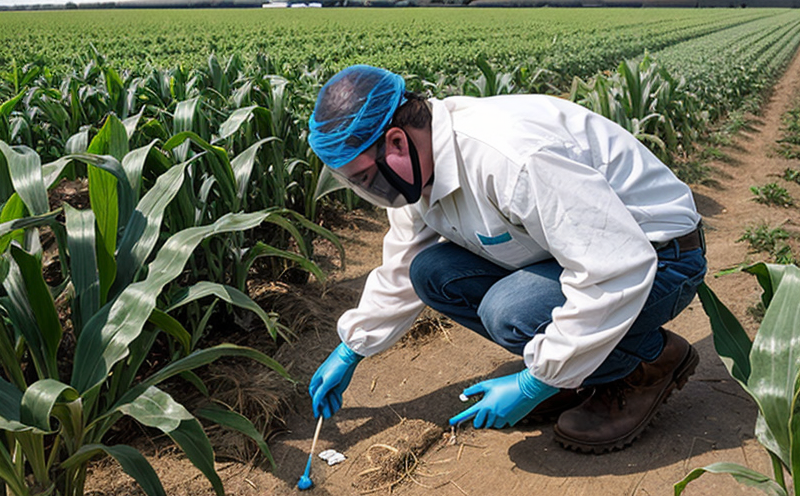Acute Toxic Pesticide Residue Risk Assessment
The assessment of acute toxic pesticide residue in crops is a critical step in ensuring food safety and protecting human health. This service evaluates the potential risks associated with pesticide residues that might be present on agricultural produce. The primary objective is to determine whether levels of pesticides exceed safe thresholds, thereby posing an immediate risk to consumers.
This assessment involves several key steps: sample collection, extraction methods, analytical techniques, and interpretation of results based on international standards such as ISO 18567-2. During the sampling process, it's essential to collect representative samples from different parts of a field or farm lot to ensure that the analysis reflects the overall condition accurately.
The next step is extraction, which typically uses solvent-based methods like QuEChERS (Quick, Easy, Cheap, Effective, Rugged, and Safe) to remove pesticides from the matrix. Following extraction, these residues are quantified using advanced analytical instruments such as LC-MS/MS (Liquid Chromatography-Mass Spectrometry). This technique provides high sensitivity and selectivity necessary for detecting even trace amounts of pesticides.
Once detected, the data obtained is compared against established thresholds set forth by regulatory bodies like the European Union’s Maximum Residue Levels (MRLs) or the Food and Agriculture Organization's Codex Alimentarius. Compliance with these standards ensures that products meet international safety requirements before reaching markets. However, if residues exceed permitted limits, further investigation into application practices may be required.
It is crucial to understand that this service does not merely identify the presence of pesticides; rather, it assesses their potential risk by considering factors such as bioavailability and exposure routes. By doing so, stakeholders can make informed decisions about product quality assurance and regulatory compliance.
In conclusion, acute toxic pesticide residue risk assessment plays a vital role in safeguarding public health while maintaining agricultural productivity. It provides valuable insights into how best to manage pesticide use responsibly, ensuring both environmental sustainability and consumer protection.
Applied Standards
The service adheres strictly to internationally recognized standards such as ISO 18567-2 for sample preparation and analysis of pesticides in foodstuffs. These guidelines ensure consistency across different laboratories worldwide, promoting reliability and comparability of results.
For more detailed information on specific methods used during this process, please refer to the official documents provided by organizations like ISO or local government agencies responsible for setting MRLs. Compliance with these standards is essential not only from a legal perspective but also because it reflects best practices endorsed globally within the scientific community.
Industry Applications
This service finds application across various sectors including agriculture, food processing industries, and regulatory bodies tasked with enforcing safety regulations. For instance, quality managers might use this assessment to monitor compliance levels after implementing new pest management strategies or introducing novel chemical treatments into production cycles.
Compliance officers can rely on these assessments when conducting audits aimed at verifying adherence to established protocols regarding pesticide application rates and timing. Additionally, R&D engineers benefit from such evaluations by identifying areas where improvements could enhance efficiency without compromising safety standards.
Use Cases and Application Examples
A key use case for this service involves testing raw materials destined for processing into consumer goods like fruits, vegetables, or packaged meals. By detecting any excessive pesticide residues early in the supply chain, manufacturers can prevent contaminated products from reaching retail outlets.
An example scenario might involve a farm experiencing unusually high levels of certain pesticides due to recent weather conditions favoring pest infestations. The acute toxic risk assessment would help determine if these elevated concentrations pose an immediate threat to consumers consuming fresh produce directly from the source or through distribution networks.





